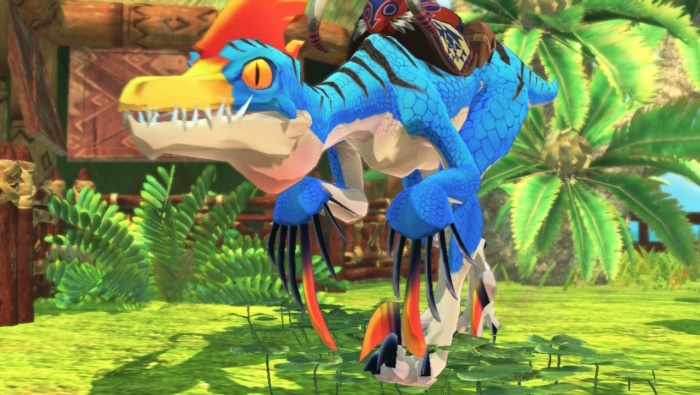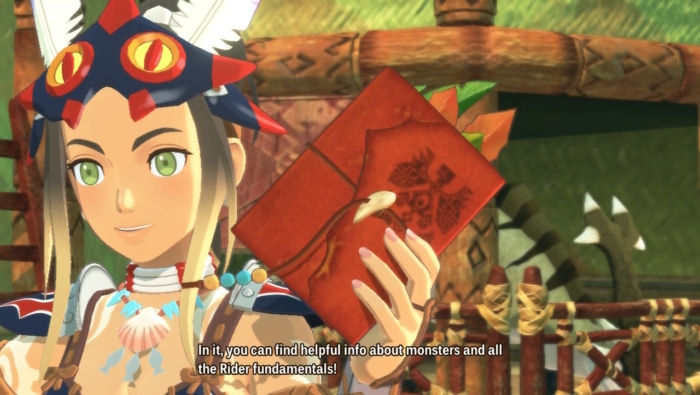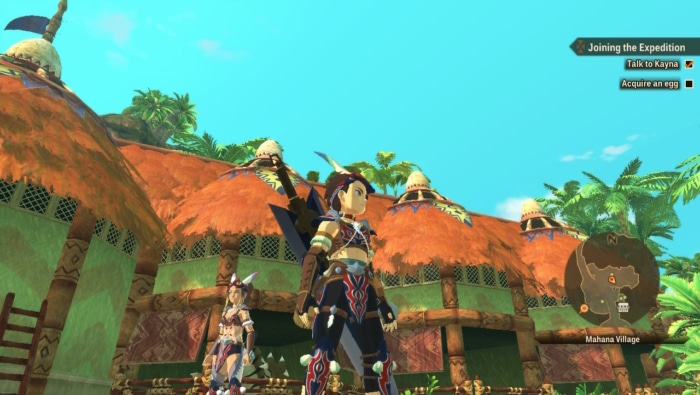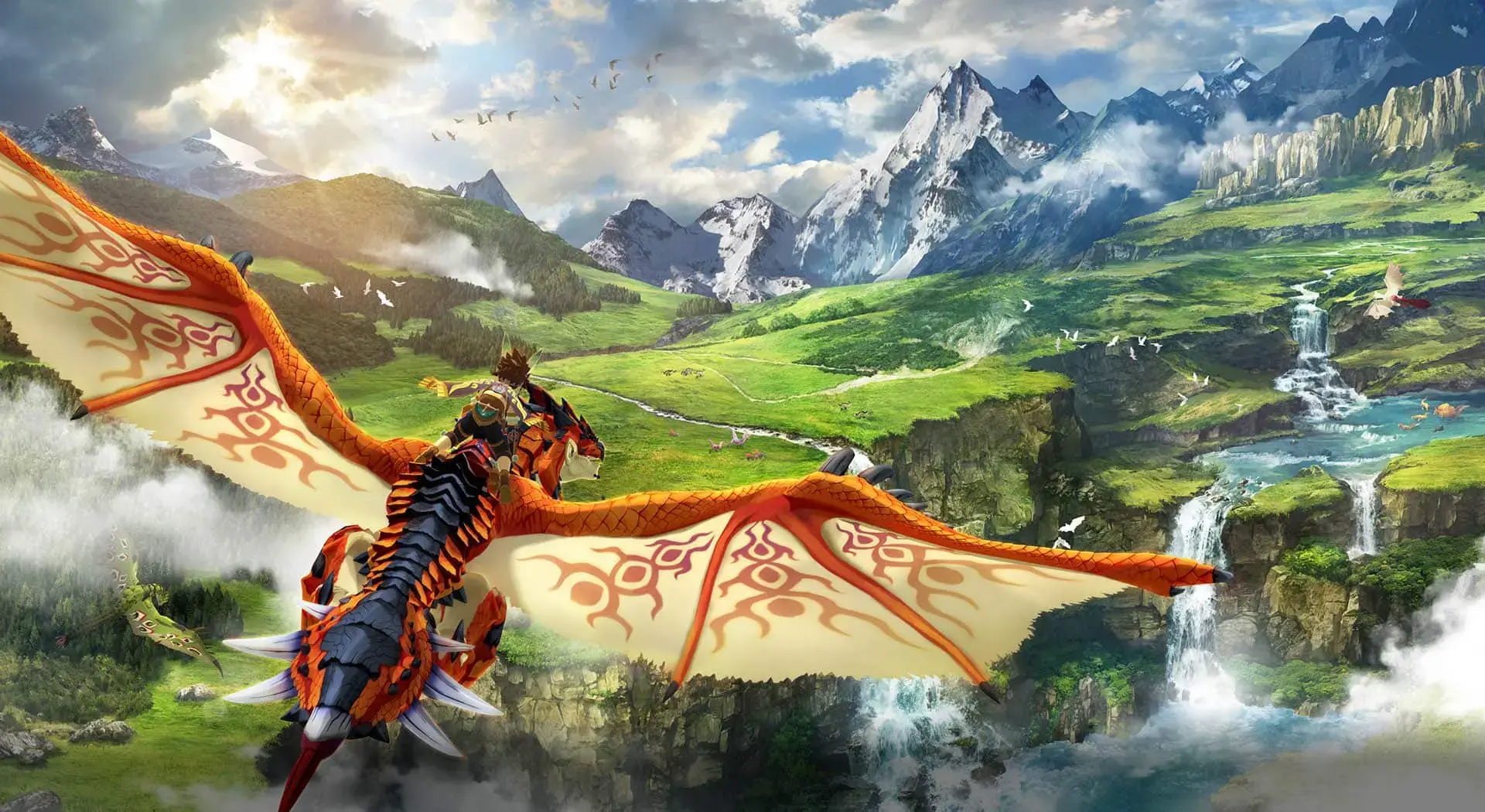Monster Hunter Stories 2: Wings of Ruin Review
-
Thoughtful art design with exciting visuals
-
Easy to get to grips with - beginner friendly
-
Turn-based combat becomes repetitive
-
Any storyline feels mostly forgotten
Monster Hunter Stories 2: Wings of Ruin offers a Pokémon-style spin-off to the Monster Hunter games. It’s a little more friendly and creature-oriented, as opposed to hunting and slaying every being you lay eyes on. The trailers and build-up from Nintendo prior to this game’s July 9 release all targeted the players who wanted to get caught up in the world of monster hunters and the surrounding story. Ironically, Monster Hunter Stories 2: Wings of Ruin stumbles at the story part—the narrative is surprisingly bland.
With a deluge of creatures, it makes an exciting, fun, and engaging experience as you seek out the specific monsties to add to your collection, and items to match up with their abilities. I think this series might have been more accurately titled ‘Monster Searching Stories’ as that’s really the main aspect I was drawn to in the gameplay.
With that being said, there’s still a heck of a lot of combat and enemies to take down. Monsters aren’t all necessarily friendly, as you’ll be forced to battle with a myriad of creatures as you journey through the map. But, if you find, hatch, and rear a monster egg you’ll get a monstie companion. Really, isn’t that every monster hunter’s fantasy?
Playing Monster Hunter Stories 2: Wings of Ruin on the Nintendo Switch was fantastic. This game had a lot going in its favour to make it really enjoyable, though a few things held it back. One of its biggest issues was the story.

Putting the Story into Monster Hunter Stories
I didn’t need to go back and play the first game in the series to know what was going on. There are a few references to the general story of the franchise and its recurring characters, but I found it easy to keep up with it all. I never felt like I was missing the big picture context.
On the other hand, Monster Hunter Stories 2: Wings of Ruin is incredibly similar to its predecessor. Just as in the first game, I played as the mute hero, my avatar. I’m able to customize my character, but the game takes a long time to give my character any reasoning. In the beginning, I was wondering why it was me who had to take this journey of monstie hunting. Why was my character doing any of it?
This is where the game separates from its Pokémon-esque gameplay. At least in the Pokémon games, the pursuit of the creatures, and mastery of them was the main motivation for the characters. In this game, I felt a little purposeless. I was certainly motivated to hunt and hatch these eggs to slay more and more difficult monsters, but again… why, specifically, was it my character being tasked with it?
The most information I got was in the beginning. My avatar was finishing their training as a rider following the departure of the Guardian creature from the village. This is where I felt the creators missed a great opportunity to flesh out the story with more emphasis on the enemy and what was threatening the world–and some more info about the Guardian and its purpose. If this theme had been followed a little more closely at crucial progression points, this game would have lived up to its name.

As it was, the very annoying feline Navirou from the first game enters the scene and tells me he will be my navigator as I head out to hunt for eggs. Just like that, we were off into the big wide world. Of course, it’s implied that my purpose is to realise what it is to be a rider, to be a friend to these monsters instead of their deadly hunter. For me, that kind of background allusion is enough of a starting point; I can fill in the blanks. For a game that was marketed as having a strong narrative element, it felt lack-lustre throughout.
The essence of the storyline is between you as a rider and the Rathalos and this plays out in the form of many unrelated quests before a final boss battle. Having spent the entire game building up relationships with these creatures as a rider, even this grand finale victory—should you be victorious—is met with an air of reluctance and doesn’t seem quite a fitting ending.
Battling With your BFF Beasts
Combat is where Monster Hunter Stories 2: Wings of Ruin harks back to its Monster Hunter origins. They’ve got to get the hunting in somewhere, right! While you’re gleefully exploring the map, you’ll come across a multitude of monster varieties, each with their own specialities and weaknesses.
Your character fights alongside your current monstie and companion determined by the biome you’re in. While attacking you have three choices – technical attack, speed attack, or power attack. Choosing the discipline when planning your next attack will both protect you and deal damage. I discovered, after several mediocre battles from me, that it’s important to know your monsters.
Each creature you fight—and so each monstie—has a special attack and an element. To successfully counter and win, you need to anticipate what these attacks and elements are so you can tailor your combat to the monster. Soon as I started doing this and getting a feel for the monster types, I had a lot more success.
Visually, combat is overwhelming and thrilling with everything from sparks to battle commentary. Combat is a perfect example of where Monster Hunter Stories 2 looks truly amazing. I really felt the attack effects as a blow landed, felt the triumphant buzz whenever a special attack between me and my monstie hit. These Kinship Skills between monstie and rider are kind of adorable, I can’t lie. That being said, the way the game initiates combat scenes is clunky, with a slow-motion pause as you approach the creature.
Amidst this, I very slowly learned how to figure out attack patterns, which is a fun way to spice up the combat sequences, with patterns changing mid-fight. For me, this kept things exciting. There are enough monsters that, even if I’d figured out most of them, I still get that rush of ‘here we go!’ before each confrontation. Again, the monsters and the action are brought to life with so much energy in these scenes that it made me seek out every fight I could.
While I didn’t have much opportunity to try out the multiplayer battle option, it does create an entirely different combat experience as you try to communicate with your teammates—who may or may not be as well versed with monster varieties as you.
The differing biomes don’t offer that wide of a variety in monsters, though. As a result, it’s possible players will become experts on monster attack types, patterns, and elements resulting in a little boredom thanks to the sometimes lengthy battle sequences. You can speed up battles when a monster retreats or with instant hits after gaining some special items and the right companion, but the fact these exist seems to me like an admission from the creators that the combat could, on occasion, become a little tedious.

More Monsties Please
I’m sure I’m not the only one who finds the term monstie simultaneously cringey and cute. It’s how the creators help us determine friend from foe.
Funnily enough, going into this playthrough I didn’t expect the monsters to be the biggest strength of Monster Hunter Stories 2, but they are. Ther’re everything I wanted them to be. Fighting them while simultaneously collecting them to raise is a bit of an odd dynamic, but this seems to be the core reasoning behind Monster Hunter Stories 2: Wings of Ruin. Monsters are both friend and foe—it all just depends on what you do with them! Even the big quest, Rathalos, epitomises this idea that, yes monsters can be evil and bring destruction, but you could make friends with them if only you knew how.
Riding monsties drives home this message. It’s a brilliant experience. In the open field on the back of your monstie, you see how much care and attention has gone into their individual animation. Every monstie has a recognisable movement as you glide across the grass planes.
Collecting and raising monsties was my main interest as I got deeper into the game. It’s all I cared about. I found eggs easily in the monster dens that are dotted all over the world. When faced by a monster, most of the time I tried to get them to retreat instead of outright killing them. Retreating monsters lead you to their dens, and thus, their goldmine of eggs.
There’s a bit more to it than just finding and hatching eggs, though. Recognising egg patterns and stronger genes is a whole game of its own. If you have the tendency to obsessively learn every detail of a game, then Monster Hunter Stories 2: Wings of Ruin is ideal for you.
A New Game With the Same Story?
The unique thing about Monster Hunter Stories 2: Wings of Ruin is that even its weaknesses seem to work in its favour. The story is thin and the battle can become repetitive, but this isn’t new. This was what we saw from the first game in the Monster Hunter Stories series. The focus on the monsters and the visually fun sequences is what fans of the series keep coming back for.
It seems Capcom might even be aware of this because all the planned DLC announcements have been for monsters from the main series, and not anything to do with furthering the narrative. Perhaps they should get rid of the ‘Stories’ part altogether and just focus on the monstie rearing—it’s what players are enjoying most after all!

